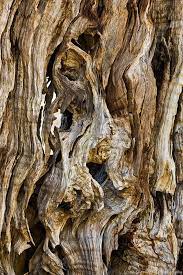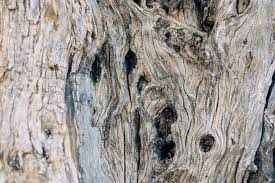Olive bark typically refers to the bark of the olive tree (Olea europaea), a species native to the Mediterranean region. The olive tree is known for its small, oval-shaped fruits (olives) and is primarily cultivated for the production of olive oil and table olives. The bark of the olive tree, like that of many trees, serves as a protective outer layer that encases and supports the inner wood of the tree.
The bark of an olive tree is generally grayish-brown in color and can range in texture from smooth to rough, depending on the age and health of the tree. Younger trees tend to have smoother bark, which becomes more fissured and textured as the tree matures. The bark plays a crucial role in protecting the tree from environmental factors, such as extreme temperatures, pests, and diseases.
In traditional and natural medicine practices, components of the olive tree bark have been used for various potential health benefits, such as anti-inflammatory and antioxidant properties. However, it’s essential to note that any use for medicinal purposes should be guided by a healthcare professional, as the safety and efficacy of these uses may vary and require further research.
The Economic Importance and Uses of Olive Bark

Olives bark, a byproduct of olive tree cultivation and olive oil production, has various economic importance and uses.
Here are some of them:
1. Tannin Production: Olives bark contains tannins, which have a significant economic value. Tannins are used in tanning leather and manufacturing various products such as shoes, belts, and upholstery. Tannins contribute to the durability and quality of leather goods.
2. Biofuel and Biomass: Olives bark can be used as a source of biomass for energy production. It can be burned to produce heat or electricity, providing an alternative and renewable energy source. This utilization helps in reducing waste and contributes to sustainable energy solutions.
3. Medicinal and Herbal Uses: Olive bark contains compounds with potential medicinal properties. Extracts from olive bark are used in traditional medicine for treating various ailments, including digestive issues, fevers, and malaria. The bark contains substances like oleuropein, which is known for its antioxidant and anti-inflammatory properties.
4. Natural Dye Production: Olives bark can be used to produce natural dyes. The bark contains compounds that can yield a range of colors, including brown and beige, when processed appropriately. These natural dyes are utilized in the textile industry.
5. Landscaping and Soil Erosion Control: Olives bark and its derivatives, such as wood chips or mulch, are used in landscaping and gardening. They help in retaining soil moisture, preventing weed growth, and controlling erosion. Landscapers often use olive bark for aesthetic purposes in gardens and landscapes.
Read Also: Olive Ovary: Economic Importance, Uses, and By-Products
6. Animal Bedding and Fodder: Olive bark can be processed and used as bedding material for livestock, particularly for poultry and other small animals. It provides a comfortable and absorbent bedding option. Additionally, olive bark may be used as fodder or added to animal feed as a source of fiber.
7. Art and Craft Applications: Olive bark can be utilized in artistic and craft applications. Craftsmen use it to create decorative items, sculptures, and other artistic products. Its unique texture and appearance make it an attractive material for various crafts.
8. Erosion Control and Land Rehabilitation: Olive bark can be used in erosion control and land rehabilitation projects. The bark can be spread over exposed soil to protect it from erosion caused by wind and water runoff, facilitating the regrowth of vegetation.
9. Essential Oil Production: Olive bark can be used to extract essential oils, which have several applications in the fragrance, cosmetics, and pharmaceutical industries. The essential oils can be used in perfumes, aromatherapy, and skin care products.
10. Environmental Remediation: Olive bark can be used in environmental remediation efforts, particularly in phytoremediation processes. Plants, including olive trees, can help absorb and mitigate pollutants from contaminated soils, contributing to environmental cleanup.
The Products and By-products That Can Be Derived From Olive Bark
Olive bark, a by-product of olive tree cultivation and olive oil production, can be utilized to produce various products and by-products. These can include:
1. Olive Bark Extracts: Olive bark can be used to extract bioactive compounds, such as oleuropein, a natural phenolic compound with potential health benefits. Olive bark extracts may have antioxidant, anti-inflammatory, and antimicrobial properties.
2. Biofuels: Olive bark can be converted into biomass pellets or biochar for use as a renewable source of energy. It can be burned to generate heat or power, providing an eco-friendly alternative to traditional fossil fuels.
3. Mulch and Soil Amendments: Ground olive bark can be used as mulch in gardens and landscaping to retain soil moisture, suppress weeds, and improve soil structure. It can also act as a natural soil amendment, enriching the soil with organic matter.
4. Animal Bedding: Finely shredded or ground olive bark can be used as bedding for animals, providing a comfortable and absorbent surface for them.
Read Also: Olive Roots: Economic Importance, Uses, and By-Products
5. Tannin Production: Olive bark contains tannins, which can be extracted and used in the tanning industry for treating animal hides and producing leather products.
6. Natural Dyes: The bark may be used to extract natural dyes, which can be utilized in textile and fabric industries to color clothing and fabrics.
7. Pectin and Dietary Fiber: Olive bark contains pectin and dietary fiber, which can be extracted and used in food products, particularly in the production of jams, jellies, and dietary supplements.
8. Decorative Crafts and Products: Olive bark can be used in arts and crafts to create decorative items such as coasters, baskets, or carved ornaments.
9. Activated Carbon: Olive bark can be processed to create activated carbon, which is used in various applications including water and air purification.
10. Natural Pesticides: Extracts from olive bark may have pesticidal properties and can be used as a natural pesticide in agricultural settings.
11. Herbal Medicine: Olive bark has been used in traditional medicine for various purposes. It may be used to prepare herbal infusions or supplements for potential health benefits.
12. Phytochemical Extraction for Pharmaceuticals: Olive bark can be a source of bioactive compounds that have potential applications in the pharmaceutical industry. These compounds may be extracted and utilized in the production of pharmaceutical drugs.
In conclusion, it is important to note that the utilization of olive bark for these products and by-products should be conducted in an environmentally sustainable and responsible manner, considering the conservation of natural resources and environmental impacts. Additionally, regulatory and safety considerations should be taken into account for any products intended for human or animal consumption or use.

